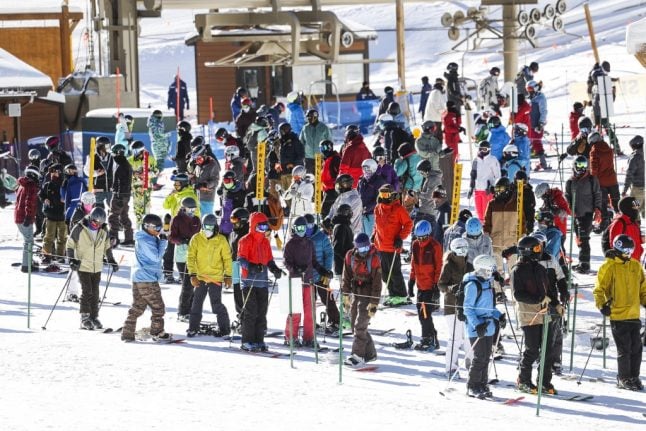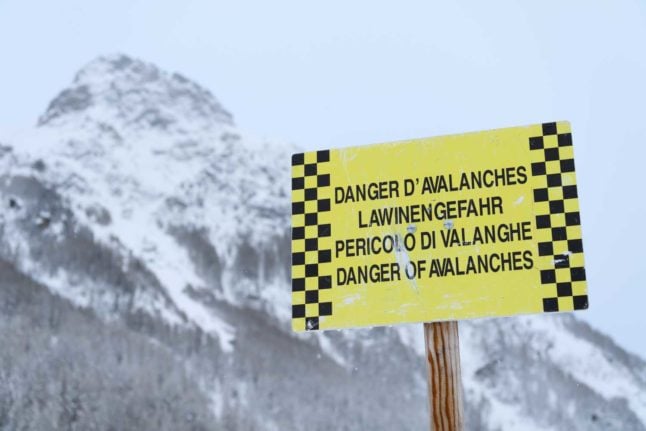As the ski season has already began in some parts of Switzerland, the cable car operator in the Belalp-Bahnen region in canton Valais is introducing a new ‘no-jostle’ queuing style never before practiced in the Swiss Alps.
The system, common on the ski slopes in the United States and Canada, consists of forming two lines. Currently in Switzerland there is only one queue for the ski lifts, often resulting in pushing or bumping against other skiers.
Waiting in a funnel-shaped line in front of the turnstile, as is common on Swiss slopes, is “a chaotic queuing system”, said Belalp-Bahnen’s director Urs Zenhäusern.
READ MORE: UPDATE: Valais becomes latest Swiss canton to tighten coronavirus restrictions
Lack of order at ski lifts has been sparking criticism from foreign tourists for years. Even the former US ambassador to Switzerland Suzi LeVine complained in 2015 about the “inefficiency” and “chaos” at Swiss ski lifts.
“I was so puzzled by the scrum heading to the lift and the inefficiency in terms of how many people were on each lift”, she wrote on her Facebook page after spending New Year’s Day at the Adelboden ski resort in the Bernese Oberland.
On North America’s mountains, on the other hand, crowd management is more efficient, Zenhäuser said.
Skiers there form two columns of two people that merge together at the turnstile using the ‘zipper’ principle — that is, alternating turns to merge.
Zenhäuser said he “swore” to use this system “if I ever run a mountain railway.” He started working at Belalp-Bahnen in September.
The American concept is even more relevant during the pandemic, “because it will help to keep the distance between people”, he added.
All Swiss ski resorts, regardless of what boarding methods they use, now require masks to be worn on all transportation, whether on trains, cable cars, or chair lifts.



 Please whitelist us to continue reading.
Please whitelist us to continue reading.
Member comments